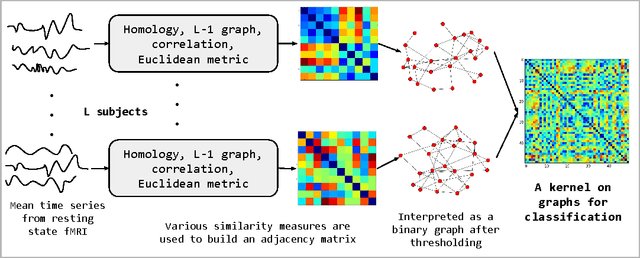Autism Spectrum Disorder Classification using Graph Kernels on Multidimensional Time Series
Paper and Code
Nov 29, 2016

We present an approach to model time series data from resting state fMRI for autism spectrum disorder (ASD) severity classification. We propose to adopt kernel machines and employ graph kernels that define a kernel dot product between two graphs. This enables us to take advantage of spatio-temporal information to capture the dynamics of the brain network, as opposed to aggregating them in the spatial or temporal dimension. In addition to the conventional similarity graphs, we explore the use of L1 graph using sparse coding, and the persistent homology of time delay embeddings, in the proposed pipeline for ASD classification. In our experiments on two datasets from the ABIDE collection, we demonstrate a consistent and significant advantage in using graph kernels over traditional linear or non linear kernels for a variety of time series features.
 Add to Chrome
Add to Chrome Add to Firefox
Add to Firefox Add to Edge
Add to Edge